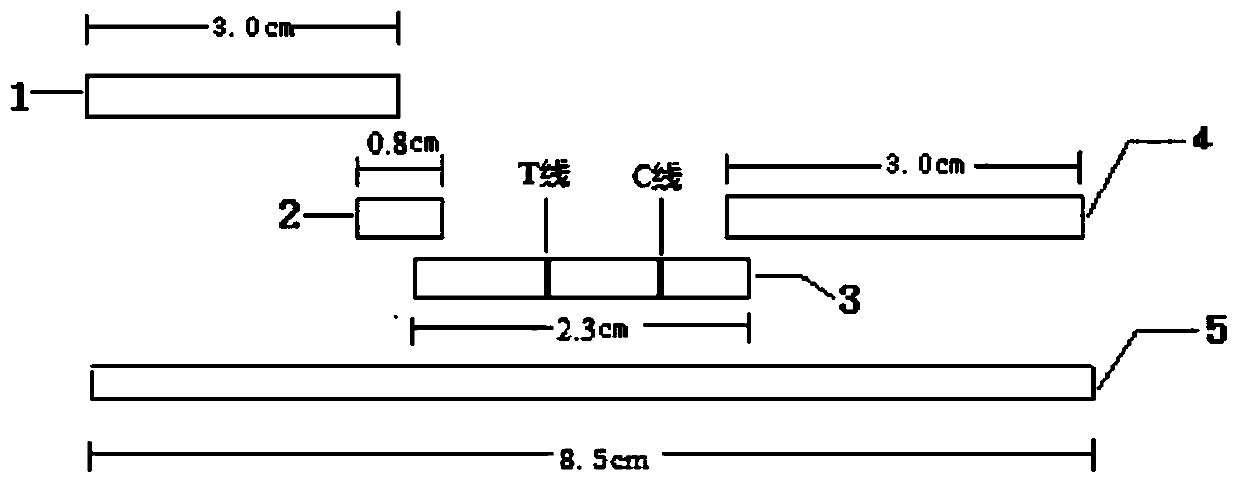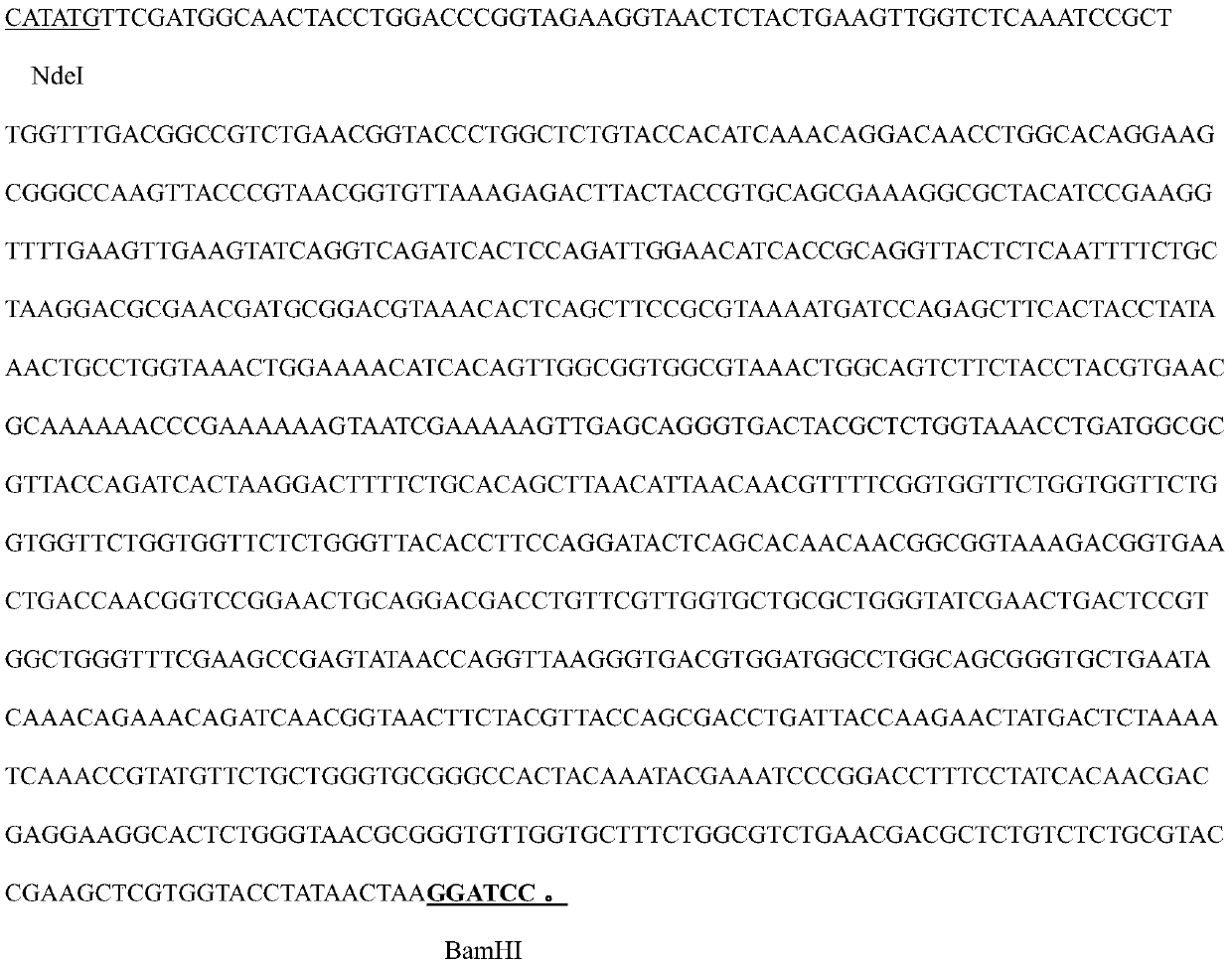Acinetobacter baumannii infection fast detection method based on multiple epitope fusion antigens
A technology of Acinetobacter baumannii and fusion antigen, applied in the direction of fusion polypeptide, hybrid peptide, measuring device, etc., can solve the problems of long time, difficult to meet rapid identification, unsuitability, etc.
- Summary
- Abstract
- Description
- Claims
- Application Information
AI Technical Summary
Problems solved by technology
Method used
Image
Examples
Embodiment 1
[0063] Preparation of Acinetobacter baumannii multiple epitope fusion antigen (Fhue+OmpA) antibody:
[0064] 1.1) Cloning of Acinetobacter baumannii FhuOmp fusion gene
[0065] Obtain the peptides with the most abundant antigenic epitopes in the extracellular domain of the surface proteins Fhue and OmpA of Acinetobacter baumannii (the accession numbers in the NCBI protein database are KMV27515 and AJF83030 respectively), find their gene coding sequences, and optimize their gene coding sequences , and link the two sequences with the coding sequence of the flexible linker peptide (ggsggsggsggs) to form a fusion gene. At the same time, the entire gene sequence was chemically synthesized after introducing the restriction site NdeI at the 5' end of the fusion gene, the termination signal TAA and the restriction site BamHI at the 3' end, which was denoted as FhuOmp. The full sequence of the gene and the encoded amino acid sequence are shown in the sequence table. Specifically, the...
Embodiment 2
[0094] Preparation of multiple epitope fusion antigen (Pilf+ponA) antibody of Acinetobacter baumannii:
[0095] 2.1) Cloning of Acinetobacter baumannii PilPon fusion gene
[0096] Obtain the peptides with the most abundant antigenic epitopes in the extracellular domain of the surface proteins Pilf and ponA of Acinetobacter baumannii (the accession numbers in the NCBI protein database are AJF80497 and ADX05080), find their gene coding sequences, and optimize their gene coding sequences , and the two sequences are connected with the coding sequence of the rigid linker peptide (eaaakeaaak) to form a fusion gene. At the same time, the entire gene sequence was chemically synthesized after the restriction site NdeI was introduced at the 5' end of the fusion gene, the termination signal TAA and the restriction site BamHI were introduced at the 3' end, which was denoted as PilPon. The full sequence of the gene and the encoded amino acid sequence are shown in the sequence table. Spec...
Embodiment 3
[0126] Latex microsphere markers for preparing Acinetobacter baumannii multiple epitope fusion antigen (Fhue+OmpA) antibody:
[0127] 3.1) Activation of latex microspheres
[0128] Take 1 mL of a solution of red carboxylated polystyrene latex microspheres (100 nm) with a concentration of 10%, and add 9 mL of 2-(N-morpholino)ethanesulfonic acid (MES) buffer solution (0.1mol / LMES, pH8.5) After mixing; use MES buffer to prepare 10mg / mL of N-hydroxysuccinimide (NHS) and 10mg / mL of 1-(3-dimethylaminopropyl)-3-ethyl 1-(3-di Methylaminopropyl)-3-ethylcarbodiimide hydrochloride hydrochloride (EDC) solution;
[0129]Add 1mL NHS solution and 1mL EDC solution to the polystyrene latex microsphere (100nm) solution in turn, mix slowly at room temperature for 30 minutes, centrifuge at 19000g for 20 minutes after incubation, remove the supernatant, and use 10mL borax buffer ( 0.1mol / L Na 2 B 4 o 7 , pH8.5) resuspension, oscillation, ultrasonic treatment (ultrasonic breaker product model:...
PUM
| Property | Measurement | Unit |
|---|---|---|
| Sensitivity | aaaaa | aaaaa |
Abstract
Description
Claims
Application Information
 Login to View More
Login to View More - R&D
- Intellectual Property
- Life Sciences
- Materials
- Tech Scout
- Unparalleled Data Quality
- Higher Quality Content
- 60% Fewer Hallucinations
Browse by: Latest US Patents, China's latest patents, Technical Efficacy Thesaurus, Application Domain, Technology Topic, Popular Technical Reports.
© 2025 PatSnap. All rights reserved.Legal|Privacy policy|Modern Slavery Act Transparency Statement|Sitemap|About US| Contact US: help@patsnap.com



